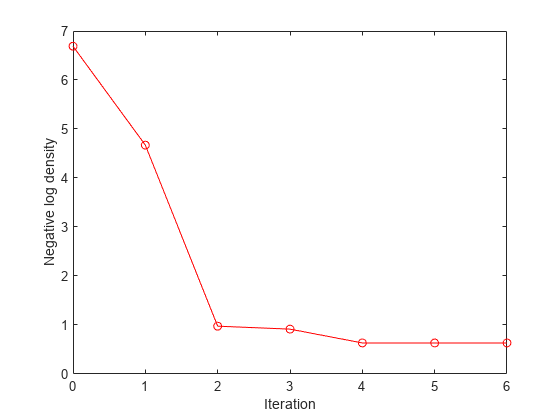estimateMAP
Class: HamiltonianSampler
Estimate maximum of log probability density
Syntax
xhat = estimateMAP(smp)
[xhat,fitinfo]
= estimateMAP(smp)
[xhat,fitinfo]
= estimateMAP(___,Name,Value)
Description
xhat = estimateMAP(smp)smp.
[ returns additional
fitting information in xhat,fitinfo]
= estimateMAP(smp)fitinfo.
[ specifies
additional options using one or more name-value pair arguments. Specify
name-value pair arguments after all other input arguments.xhat,fitinfo]
= estimateMAP(___,Name,Value)
Input Arguments
Name-Value Arguments
Output Arguments
Examples
Tips
First create a Hamiltonian Monte Carlo sampler using the
hmcSamplerfunction, and then useestimateMAPto estimate the MAP point.After creating an HMC sampler, you can tune the sampler, draw samples, and check convergence diagnostics using the other methods of the
HamiltonianSamplerclass. Using the MAP estimate as a starting point in thetuneSampleranddrawSamlesmethods can lead to more efficient tuning and sampling. For an example of this workflow, see Bayesian Linear Regression Using Hamiltonian Monte Carlo.
Algorithms
estimateMAPuses a limited memory Broyden-Fletcher-Goldfarb-Shanno (LBFGS) quasi-Newton optimizer to search for the maximum of the log probability density. See Nocedal and Wright [1].
References
[1] Nocedal, J. and S. J. Wright. Numerical Optimization, Second Edition. Springer Series in Operations Research, Springer Verlag, 2006.
Version History
Introduced in R2017a
